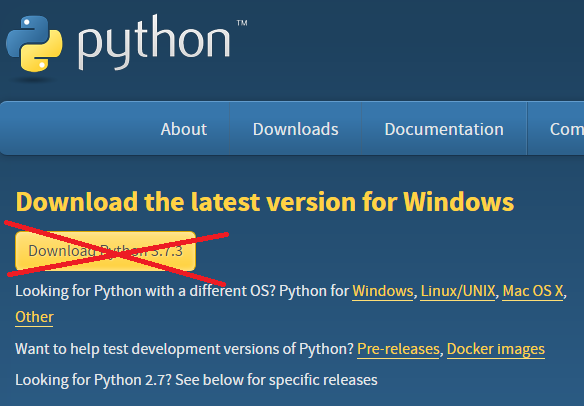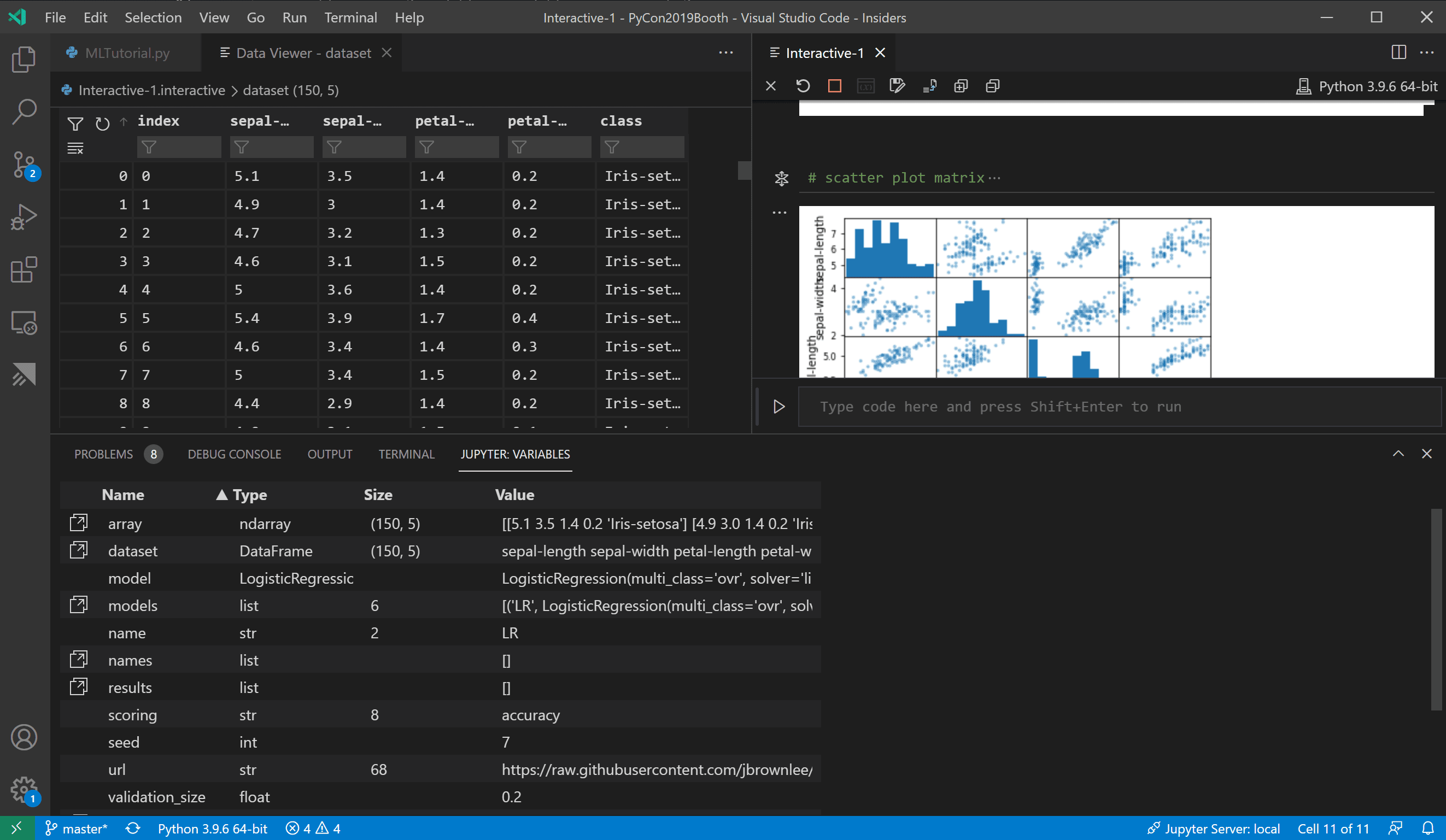Important
Jupyter (formerly IPython Notebook) is an open-source project that lets you easily combine Markdown text and executable Python source code on one canvas called a notebook. Visual Studio Code supports working with Jupyter Notebooks natively, as well as through Python code files. Jupyter (formerly IPython Notebook) is an open-source project that lets you easily combine Markdown text and executable Python source code on one canvas called a notebook. Visual Studio Code supports working with Jupyter Notebooks natively, as well as through Python code files. This topic covers the native support available for Jupyter Notebooks and demonstrates how to: Create, open, and save Jupyter Notebooks; Work with Jupyter code. The Notebook API allows Visual Studio Code extensions to open files as notebooks, execute notebook code cells, and render notebook outputs in a variety of rich and interactive formats. You may know of popular notebook interfaces like Jupyter Notebook or Google Colab – the Notebook API allows for similar experiences inside Visual Studio Code.
On January 15, 2021 the Azure Notebooks public preview site retired and has been replaced with integrated services from Visual Studio, Azure, and GitHub. To create new or execute notebook content, learn more about our other notebooks experiences from Microsoft.
In this quickstart, you will learn how to import a Jupyter Notebook for use in assorted Microsoft offerings.
If you have existing Jupyter Notebooks or want to start a new project, you can use them with many of Microsoft's offerings. Some options described in the sections below include:
Create an environment for notebooks
If you'd like to create an environment that matches that of the retired Azure Notebooks Preview, you can use the script file provided in GitHub.
- Navigate to the Azure Notebooks GitHub repository or directly access the environment folder.
- From a command prompt, navigate to the directory you want to use for your projects.
- Download the environment folder contents and follow the README instructions to install the Azure Notebooks package dependencies.
Use Notebooks in Visual Studio Code
VS Code is a free code editor that you can use locally or connected to remote compute. Combined with the Python extension, it offers a full environment for Python development including a rich native experience for working with Jupyter Notebooks.
If you have existing project files or would like to create a new notebook, you can use VS Code! For guidance on using VS Code with Jupyter Notebooks, see the Working with Jupyter Notebooks in Visual Studio Code and Data Science in Visual Studio Code tutorials.
Visual Studio Code Jupyter Notebook No Kernel
You can also use the Azure Notebooks environment script with Visual Studio Code to create an environment that matches the Azure Notebooks Preview.
Use Notebooks in GitHub Codespaces
GitHub Codespaces provides cloud hosted environments where you can edit your notebooks using Visual Studio Code or in your web browser. It offers the same great Jupyter experience as VS Code, but without needing to install anything on your device. If you don’t want to set up a local environment and prefer a cloud-backed solution, then creating a codespace is a great option. To get started:
- (Optional) Gather any project files you would like to use with GitHub Codespaces.
- Create a GitHub repository for storing your notebooks.
- Add your files to the repository.
Use Notebooks with Azure Machine Learning
Azure Machine Learning provides an end-to-end machine learning platform to enable users to build and deploy models faster on Azure. Azure ML allows you to run Jupyter Notebooks on a VM or a shared cluster computing environment. If you are in need of a cloud-based solution for your ML workload with experiment tracking, dataset management, and more, we recommend Azure Machine Learning. To get started with Azure ML:


(Optional) Gather any project files you would like to use with Azure ML.
Create a Workspace in the Azure portal.
Open the Azure Studio (preview).
Using the left-side navigation bar, select Notebooks.
Click on the Upload files button and upload the project files.
For additional information about Azure ML and running Jupyter Notebooks, you can review the documentation or try the Intro to Machine Learning module on Microsoft Learn.
Use Azure Lab Services
Azure Lab Services allow educators to easily setup and provide on-demand access to preconfigured VMs for an entire classroom. If you're looking for a way to work with Jupyter Notebooks and cloud compute in a tailored classroom environment, Lab Services is a great option.
If you have existing project files or would like to create a new notebook, you can use Azure Lab Services. For guidance about setting up a lab, see Set up a lab to teach data science with Python and Jupyter Notebooks
Visual Studio Code Jupyter Notebook Intellisense
Use GitHub
Jupyter Notebook In Visual Studio
GitHub provides a free, source-control-backed way to store notebooks (and other files), share your notebooks with others, and work collaboratively. If you’re looking for a way to share your projects and collaborate with others, GitHub is a great option and can be combined with GitHub Codespaces for a great development experience. To get started with GitHub
- (Optional) Gather any project files you would like to use with GitHub.
- Create a GitHub repository for storing your notebooks.
- Add your files to the repository.
Visual Studio Code Jupyter Notebook Extension
Next steps
